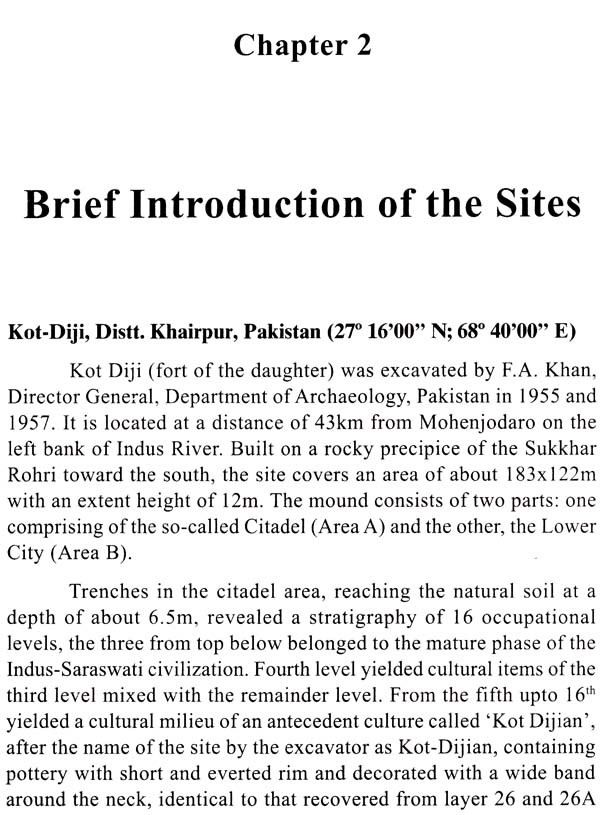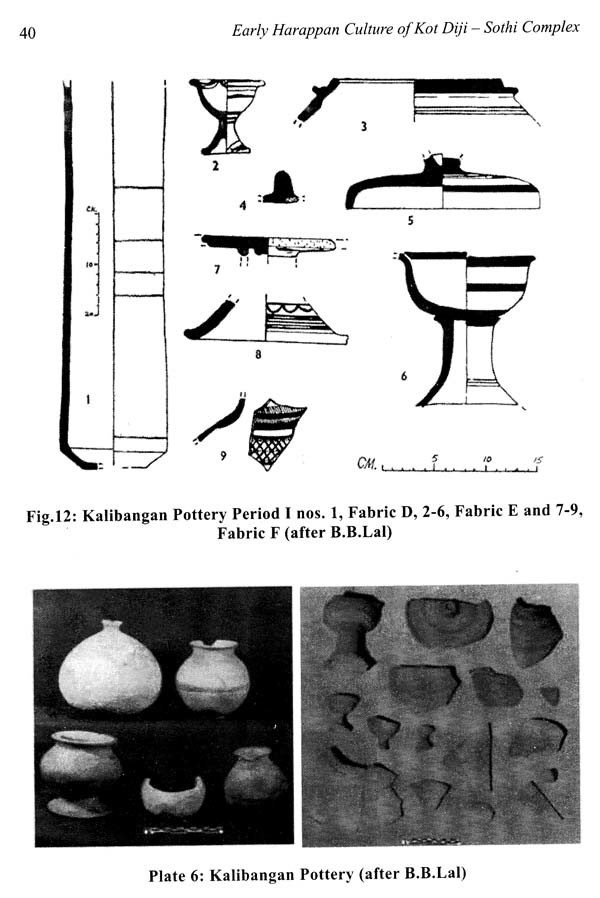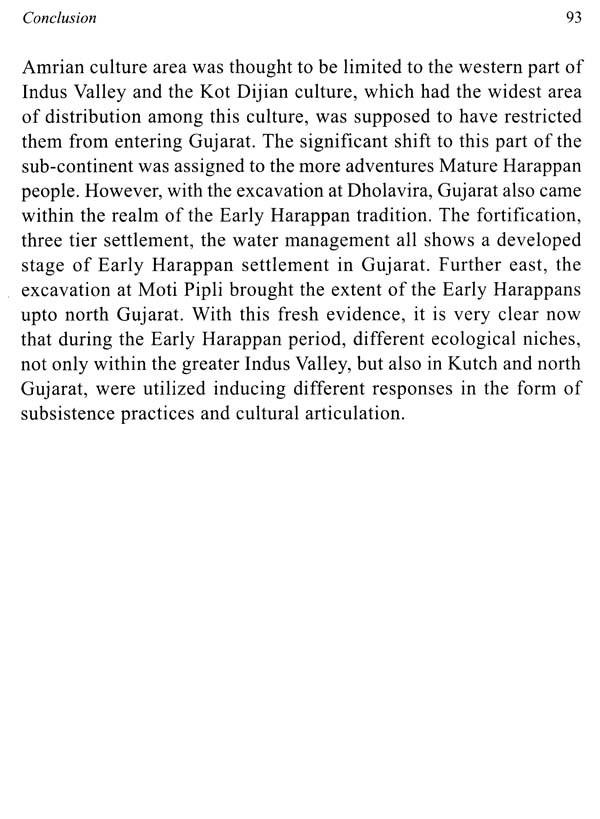
Early Harappan Culture of Kot Diji-Sothi Complex
Book Specification
| Item Code: | AZE496 |
| Author: | Vinay Kumar |
| Publisher: | B.R. PUBLISHING CORPORATION |
| Language: | ENGLISH |
| Edition: | 2018 |
| ISBN: | 9789386223920 |
| Pages: | 118 (Throughout B/w Illustrations) |
| Cover: | HARDCOVER |
| Other Details | 10.00x6.50 |
| Weight | 310 gm |
Book Description
Dr. Kumar is the recipient of Gold Medal by former Hon'ble President of India for being University topper. Dr. Kumar has been awarded Junior and Senior Research Fellowship by University Grants Commission. He has also been awarded National Museum of Korea 2014 and 2016 Museum Network Fellowship by Govt. of South Korea. Dr. Kumar has worked as Consultant and Assistant Archaeologist in Archaeological Survey of India. He has also worked as Research Scholar in Indira Gandhi National Center for the Arts (IGNCA) and Indian Archaeological Society, New Delhi. He has participated and supervised many archaeological excavations namely excavations at Lahuradeva (U.P), Bhirrana (Haryana), Baror (Rajasthan), Hansi (Haryana), Bhanpura (M.P), Gambhirwatola (M. P.), etc. He has undertaken many research projects and their outcomes have been presented in many National and International workshops, seminars and conferences. Dr. Kumar has worked with many International and National Scholars. He has published more than forty research papers in many national and International journals. He has authored the book titled, West Asian and Hellenistic Elements in Indian Art and Mani Sushma: Archaeology and Heritage.
Mughal observed that the Early Harappan culture of Kot Diji Sothi Complex in the Indus system evolved exclusively out of the Baluchi chalcolithic cultures. However, it appears that this Kot Diji complex was essentially an indigenously evolving river valley phenomenon. The excavations conducted at Jalilpur, Saraikhola, Banawali, Kalibangan, Rakhigarhi and Kunal have brought to light the sequence of early cultures as it appeared in the Indus system. It shows that there were three phases of colonization of this region before the Harappan culture appeared on the scene.
**Contents and Sample Pages**











